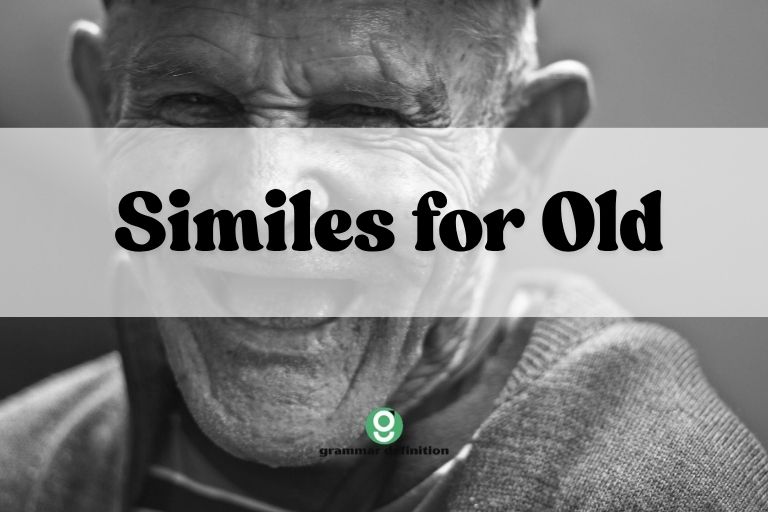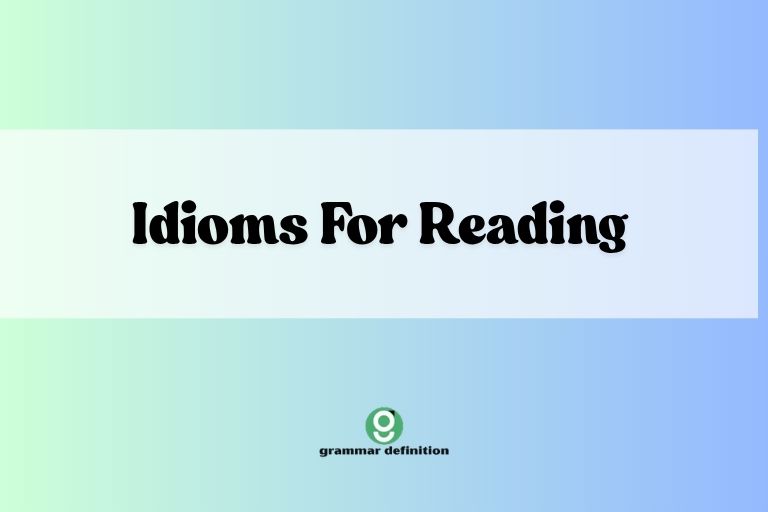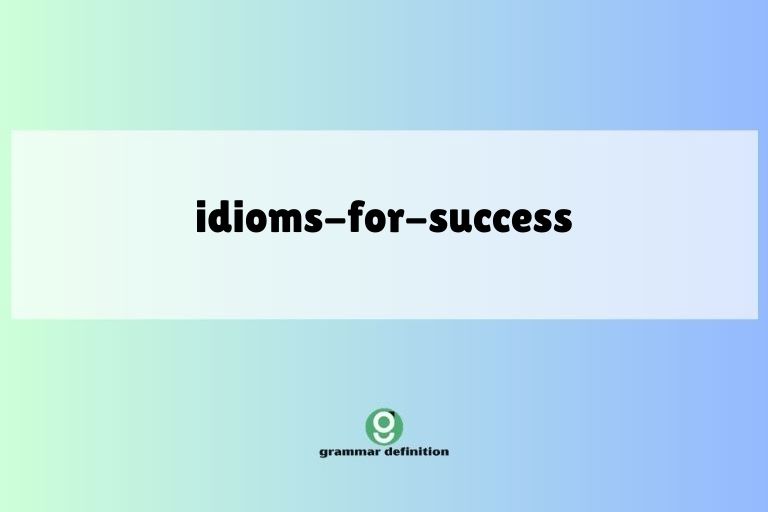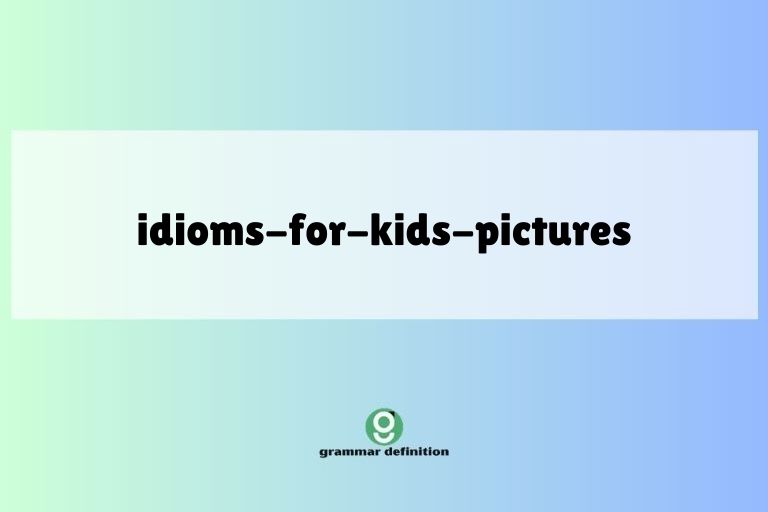Similes for Old: Enriching Your Language

Understanding and using similes effectively is crucial for adding depth and color to your writing and speech. Similes, which compare two unlike things using ‘like’ or ‘as,’ are particularly useful when describing abstract concepts or qualities, such as old age.
This article provides a comprehensive guide to similes for describing old age, exploring various types, usage rules, common mistakes, and practice exercises. Whether you are a student, writer, or language enthusiast, this guide will enhance your ability to craft vivid and impactful descriptions.
This article aims to equip you with the knowledge and skills necessary to use similes for ‘old’ with confidence and creativity. By understanding the nuances of simile construction and exploring a wide range of examples, you will be able to add a layer of sophistication and expressiveness to your communication.
This guide will benefit anyone looking to enhance their descriptive writing, improve their understanding of figurative language, or simply expand their vocabulary.
Table of Contents
- Definition of Simile
- Structural Breakdown of Similes
- Types of Similes
- Examples of Similes for Old
- Usage Rules for Similes
- Common Mistakes with Similes
- Practice Exercises
- Advanced Topics: Nuances and Subtleties
- Frequently Asked Questions
- Conclusion
Definition of Simile
A simile is a figure of speech that directly compares two different things using the words “like” or “as.” Its primary function is to create a vivid image or enhance understanding by drawing a parallel between something familiar and something less so. Similes are essential tools in descriptive writing and figurative language, allowing writers and speakers to express complex ideas in a relatable and engaging manner.
Similes are classified as a type of figurative language, specifically a comparison. They differ from metaphors, which directly equate two things without using “like” or “as.” The context in which a simile is used can significantly alter its impact and meaning.
A well-crafted simile can evoke emotions, create humor, or provide a deeper insight into the subject being described.
Structural Breakdown of Similes
The basic structure of a simile consists of three main components: the subject (the thing being described), the comparison word (“like” or “as”), and the object of comparison (the thing to which the subject is being compared). Understanding this structure is crucial for creating effective and meaningful similes.
The formula for a simile can be represented as follows: Subject + Comparison Word (like/as) + Object of Comparison. For example, in the simile “He is as brave as a lion,” “He” is the subject, “as” is the comparison word, and “a lion” is the object of comparison. The strength of a simile lies in the clarity and relevance of the comparison.
Subject
The subject is the entity you are describing. When creating similes for ‘old,’ the subject is often a person, an object, or a concept associated with old age.
For example, “Her hands” or “His memories” could be the subject.
Comparison Word
The comparison word, either “like” or “as,” is the linchpin of the simile, explicitly signaling a comparison. The choice between “like” and “as” is often a matter of stylistic preference, though “as” is sometimes used for comparisons of degree or manner (e.g., “as tall as”).
Object of Comparison
The object of comparison is what the subject is being compared to. This element should share a notable characteristic with the subject, creating a meaningful connection.
For example, comparing someone “as old as the hills” uses the age and permanence of hills to convey the person’s advanced age.
Types of Similes
Similes can be categorized based on the type of comparison they make or the effect they aim to achieve. Understanding these categories can help you choose the most appropriate simile for a given context.
Descriptive Similes
Descriptive similes focus on physical attributes or observable qualities. These similes are particularly useful for painting a vivid picture in the reader’s mind.
For instance, “His skin was like parchment” is a descriptive simile that highlights the texture of the skin.
Emotional Similes
Emotional similes evoke feelings or emotional states. They are used to convey the emotional impact of old age, such as loneliness, nostalgia, or wisdom.
An example is “She felt as lonely as a forgotten photograph.”
Functional Similes
Functional similes compare the way something works or its purpose. These similes can be used to describe the capabilities or limitations associated with old age.
For example, “His memory was like a rusty hinge, creaking with effort.”
Exaggerated Similes
Exaggerated similes, also known as hyperbole, are used for emphasis or comedic effect. They deliberately overstate the comparison to create a memorable image.
For instance, “He was as old as time itself” exaggerates the person’s age for dramatic effect.
Examples of Similes for Old
The following tables provide a comprehensive list of similes for describing various aspects of old age, categorized for clarity and ease of reference. Each category includes a range of examples to illustrate the diversity and versatility of similes.
Similes for Physical Appearance
This table focuses on similes that describe the physical characteristics often associated with old age, such as wrinkles, gray hair, and frailty.
| Simile | Explanation |
|---|---|
| Her hair was as white as snow. | Compares the color of her hair to the pure white of snow. |
| His skin was like wrinkled parchment. | Compares the texture of his skin to the thin, crinkled surface of parchment. |
| She moved as slowly as a snail. | Compares her pace to the slow movement of a snail. |
| His hands were like gnarled branches. | Compares the shape and texture of his hands to the twisted form of tree branches. |
| Her eyes were as faded as old photographs. | Compares the vibrancy of her eyes to the muted colors of old photographs. |
| He was as frail as a dry leaf. | Compares his physical weakness to the fragility of a dried leaf. |
| Her voice was like a creaking door. | Compares the sound of her voice to the grating noise of an old door. |
| His back was bent like a bow. | Compares the curvature of his back to the shape of a bow. |
| She was as thin as a rake. | Compares her slender frame to the narrow form of a rake. |
| His face was like a roadmap of wrinkles. | Compares the network of wrinkles on his face to the complex lines of a roadmap. |
| Her steps were as cautious as a cat’s. | Compares her careful movements to the deliberate steps of a cat. |
| His bones felt like brittle twigs. | Compares the fragility of his bones to the easily broken nature of twigs. |
| She was as stooped as an old willow tree. | Compares her posture to the drooping form of a willow tree. |
| His gait was like a rocking chair’s sway. | Compares his walking motion to the gentle back-and-forth movement of a rocking chair. |
| Her smile was as fragile as spun glass. | Compares the delicacy of her smile to the easily broken nature of spun glass. |
| His beard was like a tangled skein of yarn. | Compares the unkempt appearance of his beard to a mass of tangled yarn. |
| She was as wrinkled as a prune. | Compares the texture of her skin to the shriveled surface of a prune. |
| His frame was as light as a feather. | Compares his weight to the weightlessness of a feather. |
| Her skin felt like fine tissue paper. | Compares the texture of her skin to the thinness and delicacy of tissue paper. |
| He was as bald as a billiard ball. | Compares his lack of hair to the smooth surface of a billiard ball. |
| She moved as gracefully as a swan, despite her age. | Emphasizes her continued grace, likening her movements to a swan’s. |
| His eyes twinkled like distant stars. | Highlights the brightness and sparkle in his eyes, even in old age. |
| Her face was etched with time, like an ancient stone carving. | Compares the deep lines on her face to the lasting marks on an old carving. |
| He stood as tall and proud as an old oak tree. | Compares his posture and presence to the strength and longevity of an oak tree. |
| She was as delicate as a porcelain doll. | Highlights her fragility and delicate features. |
Similes for Mental State
This table explores similes that describe the mental and cognitive aspects of old age, such as memory, wisdom, and confusion.
| Simile | Explanation |
|---|---|
| His memory was like a sieve, letting details slip through. | Compares his failing memory to a sieve that cannot retain information. |
| Her wisdom was as deep as an ancient well. | Compares the depth of her wisdom to the profound depth of an ancient well. |
| His thoughts were as scattered as autumn leaves. | Compares his confused thoughts to the haphazard scattering of leaves in autumn. |
| Her mind was like a library, filled with stories. | Compares her vast knowledge and experiences to the contents of a library. |
| His confusion was as thick as fog. | Compares the intensity of his confusion to the density of fog. |
| Her memories were as vivid as yesterday. | Highlights the clarity and sharpness of her recollections. |
| His knowledge was like an encyclopedia, vast and detailed. | Emphasizes the breadth and depth of his understanding. |
| Her stories were as captivating as a fairy tale. | Highlights the engaging and enchanting quality of her narratives. |
| His mind wandered like a river, following its own course. | Compares his unfocused thinking to the meandering path of a river. |
| Her insights were as sharp as a tack. | Compares the precision and accuracy of her insights to the sharpness of a tack. |
| His focus was like a flickering candle. | Compares his wavering attention to the unsteady flame of a candle. |
| Her understanding was as clear as crystal. | Compares the clarity of her understanding to the transparency of crystal. |
| His thoughts were as slow as molasses. | Compares the pace of his thinking to the slow-moving nature of molasses. |
| Her judgment was as sound as a bell. | Compares the reliability of her judgment to the clear tone of a bell. |
| His imagination was like a boundless ocean. | Compares the limitlessness of his imagination to the vastness of the ocean. |
| Her words were as comforting as a warm blanket. | Compares the soothing effect of her words to the comfort of a warm blanket. |
| His patience was as thin as paper. | Compares his limited patience to the fragility of paper. |
| Her spirit was as bright as a sunny day. | Compares her cheerful disposition to the brightness of a sunny day. |
| His determination was like a stubborn mule. | Compares his unwavering resolve to the persistence of a mule. |
| Her resilience was as strong as steel. | Compares her ability to recover from adversity to the strength of steel. |
| His laughter was as infectious as a yawn. | Compares the contagiousness of his laughter to the spread of a yawn. |
| Her love was as unconditional as a mother’s. | Compares the unwavering nature of her love to a mother’s love. |
| His heart was as big as the ocean. | Emphasizes the vastness and generosity of his emotions. |
| Her kindness was like a gentle rain. | Compares her benevolent actions to the nurturing effect of rain. |
| His anger flared like a sudden fire. | Compares the intensity and suddenness of his anger to a fire. |
Similes for Life Experience
This table includes similes that depict the accumulation of life experiences and the passage of time in old age.
| Simile | Explanation |
|---|---|
| His life was like a long and winding road. | Compares the journey of his life to a road with many turns and challenges. |
| Her years were as countless as the stars. | Compares the number of her years to the seemingly infinite number of stars. |
| His memories were like a treasure chest, filled with gems. | Compares his valuable memories to the precious contents of a treasure chest. |
| Her stories were as old as time itself. | Compares the age of her stories to the vastness of time. |
| His experiences were like pages in a well-read book. | Compares his accumulated experiences to the numerous pages of a book. |
| Her life was as full as a brimming cup. | Compares the richness of her life to a cup filled to the brim. |
| His days were as slow as a ticking clock. | Compares the pace of his days to the monotonous rhythm of a clock. |
| Her memories were as clear as a mountain stream. | Highlights the clarity and purity of her recollections. |
| His journey was like a ship sailing through stormy seas. | Compares his life’s challenges to navigating a ship through rough waters. |
| Her wisdom was as vast as the ocean. | Emphasizes the depth and breadth of her knowledge. |
| His life was as colorful as a rainbow. | Compares the variety and vibrancy of his experiences to the colors of a rainbow. |
| Her legacy was like a tree, its roots running deep. | Compares the lasting impact of her life to the enduring presence of a tree. |
| His words were as valuable as gold. | Emphasizes the importance and worth of his advice. |
| Her influence was like a gentle breeze, shaping the world around her. | Compares her subtle but significant impact to the shaping force of a breeze. |
| His life was as rich as a tapestry, woven with experiences. | Compares the complexity and beauty of his life to the intricate design of a tapestry. |
| Her impact was as profound as a stone dropped in a pond. | Compares the far-reaching effects of her actions to the ripples caused by a stone. |
| His actions were as selfless as a saint’s. | Compares his altruistic deeds to the virtuous behavior of a saint. |
| Her teachings were like seeds, planted for future generations. | Compares the lasting influence of her lessons to the growth of seeds. |
| His guidance was as steady as a lighthouse beam. | Compares the reliability of his advice to the constant light of a lighthouse. |
| Her spirit was as enduring as the mountains. | Compares the strength and resilience of her spirit to the permanence of mountains. |
| His strength was like a well-worn leather, tough and reliable. | Compares his resilience to the durability of leather. |
| Her heart was as full of love as a summer garden is of blooms. | Emphasizes the abundance of love in her heart. |
| His presence was as comforting as a familiar song. | Compares the soothing effect of his presence to a beloved melody. |
| Her wisdom shone like a beacon, guiding those around her. | Highlights the guiding and illuminating quality of her wisdom. |
| His life story unfolded like a grand epic. | Compares the scale and drama of his life to an epic tale. |
Usage Rules for Similes
Using similes effectively requires adherence to certain rules. These rules ensure that the comparison is clear, relevant, and impactful.
- Use “like” or “as”: Similes must explicitly use either “like” or “as” to signal a comparison.
- Compare dissimilar things: The subject and object of comparison should be distinct entities that share a common attribute.
- Ensure clarity: The comparison should be easily understood and relevant to the context.
- Avoid clichés: Overused similes can diminish the impact of your writing. Strive for originality.
- Maintain consistency: The comparison should be consistent throughout the sentence and paragraph.
Avoiding Clichés
Clichéd similes, such as “as old as the hills,” have lost their impact through overuse. While they may be easily understood, they lack originality and can make your writing seem uninspired.
Strive to create fresh and unique comparisons that will capture the reader’s attention.
Ensuring Relevance
The comparison made in a simile should be relevant to the quality or characteristic you are trying to describe. An irrelevant comparison can confuse the reader and weaken the impact of your writing.
For example, comparing someone’s age to the color blue would be irrelevant and nonsensical.
Common Mistakes with Similes
Several common mistakes can undermine the effectiveness of similes. Being aware of these errors can help you avoid them in your own writing.
- Using metaphors instead of similes: Confusing similes with metaphors is a common error. Remember that similes use “like” or “as,” while metaphors directly equate two things.
- Creating unclear comparisons: The comparison should be easily understood. Avoid obscure or convoluted comparisons that confuse the reader.
- Mixing metaphors and similes: Combining elements of both can create awkward and confusing sentences.
- Using inappropriate comparisons: The comparison should be appropriate for the context and tone of your writing.
Here are some examples of common mistakes and how to correct them:
| Incorrect | Correct | Explanation |
|---|---|---|
| He is old hills. | He is as old as the hills. | The incorrect sentence uses a metaphor instead of a simile. |
| Her memory was like a purple elephant. | Her memory was like a rusty hinge. | The incorrect comparison is unclear and irrelevant. |
| His life was a winding road, like a book. | His life was like a winding road. | The incorrect sentence mixes a metaphor and a simile. |
| She was as old as a newborn baby. | She was as wise as an old owl. | The incorrect comparison is inappropriate and nonsensical. |
Practice Exercises
Test your understanding of similes with these practice exercises. Each exercise focuses on different aspects of simile construction and usage.
Exercise 1: Identifying Similes
Identify the similes in the following sentences:
- His skin was like wrinkled parchment.
- She moved as slowly as a snail.
- Her wisdom was a deep well.
- His thoughts were as scattered as autumn leaves.
- Her mind was a library.
- His confusion was as thick as fog.
- Life is a highway.
- Her memories were as vivid as yesterday.
- Time is money.
- His knowledge was like an encyclopedia.
Answers:
- His skin was like wrinkled parchment.
- She moved as slowly as a snail.
- His thoughts were as scattered as autumn leaves.
- His confusion was as thick as fog.
- Her memories were as vivid as yesterday.
- His knowledge was like an encyclopedia.
Exercise 2: Completing Similes
Complete the following similes with an appropriate comparison:
- His hair was as white as __________.
- Her hands were like __________.
- He was as frail as __________.
- Her voice was like __________.
- His back was bent like __________.
- She was as thin as __________.
- His face was like __________.
- Her steps were as cautious as __________.
- His bones felt like __________.
- She was as stooped as __________.
Possible Answers:
- His hair was as white as snow.
- Her hands were like gnarled branches.
- He was as frail as a dry leaf.
- Her voice was like a creaking door.
- His back was bent like a bow.
- She was as thin as a rake.
- His face was like a roadmap of wrinkles.
- Her steps were as cautious as a cat’s.
- His bones felt like brittle twigs.
- She was as stooped as an old willow tree.
Exercise 3: Creating Similes
Create your own similes to describe the following aspects of old age:
- Memory loss
- Wisdom
- Loneliness
- Physical weakness
- Life experience
- Resilience
- Kindness
- Patience
- Determination
- Love
Possible Answers:
- Memory loss: His memory was like a sieve, letting details slip through.
- Wisdom: Her wisdom was as deep as an ancient well.
- Loneliness: She felt as lonely as a forgotten photograph.
- Physical weakness: He was as frail as a dry leaf.
- Life experience: His life was like a long and winding road.
- Resilience: Her resilience was as strong as steel.
- Kindness: His kindness was like a gentle rain.
- Patience: Her patience was as thin as paper.
- Determination: His determination was like a stubborn mule.
- Love: Her love was as unconditional as a mother’s.
Advanced Topics: Nuances and Subtleties
For advanced learners, understanding the nuances and subtleties of simile usage can elevate their writing to a higher level. This includes exploring extended similes, metaphorical similes, and the use of similes in different literary genres.
Extended Similes
An extended simile is a simile that is developed over several lines or sentences. It allows for a more detailed and complex comparison, creating a richer and more vivid image in the reader’s mind.
Extended similes are often used in poetry and prose to add depth and texture to the writing.
Metaphorical Similes
A metaphorical simile combines elements of both similes and metaphors. It uses “like” or “as” to make a comparison, but the comparison itself is metaphorical in nature.
This can create a more nuanced and evocative effect.
Similes in Different Literary Genres
The use of similes can vary depending on the literary genre. In poetry, similes are often used to create imagery and evoke emotions.
In prose, they can be used to clarify complex ideas or add descriptive detail. Understanding the conventions of different genres can help you use similes more effectively.
Frequently Asked Questions
- What is the difference between a simile and a metaphor?
A simile compares two things using “like” or “as,” while a metaphor directly equates two things without using those words. For example, “He is as brave as a lion” is a simile, while “He is a lion” is a metaphor.
- Why are similes important in writing?
Similes add depth, clarity, and vividness to writing. They help readers understand complex ideas by drawing parallels between familiar and unfamiliar concepts. They also make writing more engaging and memorable.
- How can I avoid using clichéd similes?
To avoid clichés, try to come up with original comparisons that are specific to the subject you are describing. Think about the unique qualities of the subject and find less common objects or concepts to compare them to.
- Can a simile be too complex?
Yes, a simile can be too complex if the comparison is obscure or difficult to understand. The goal of a simile is to clarify and enhance understanding, so it should be relatively straightforward and relevant.
- Is it better to use “like” or “as” in a simile?
The choice between “like” and “as” is often a matter of stylistic preference. Both words are equally valid for creating similes. However, “as” is sometimes used for comparisons of degree or manner.
- How can I make my similes more impactful?
To make your similes more impactful, choose comparisons that are vivid, relevant, and original. Use sensory details to create a strong image in the reader’s mind. Also, consider the tone and context of your writing when choosing a simile.
- What are some common mistakes to avoid when using similes?
Common mistakes include confusing similes with metaphors, creating unclear comparisons, mixing metaphors and similes, and using inappropriate comparisons. Being aware of these errors can help you avoid them in your own writing.
- Are there any genres where similes are more commonly used?
Similes are commonly used in poetry, prose, and even everyday speech. They are particularly prevalent in descriptive writing and figurative language, where they serve to enhance imagery and understanding.
Conclusion
Mastering the art of crafting similes, especially those related to the concept of “old,” is a valuable skill for any writer or speaker. Similes allow you to paint vivid pictures, evoke emotions, and convey complex ideas in a relatable and engaging manner.
By understanding the structure, types, and usage rules of similes, you can enhance your ability to create impactful and memorable descriptions.
Remember to strive for originality, relevance, and clarity when creating similes. Avoid clichés and common mistakes, and always consider the context and tone of your writing.
With practice and attention to detail, you can use similes to add depth, color, and sophistication to your communication, enriching your language and captivating your audience.






